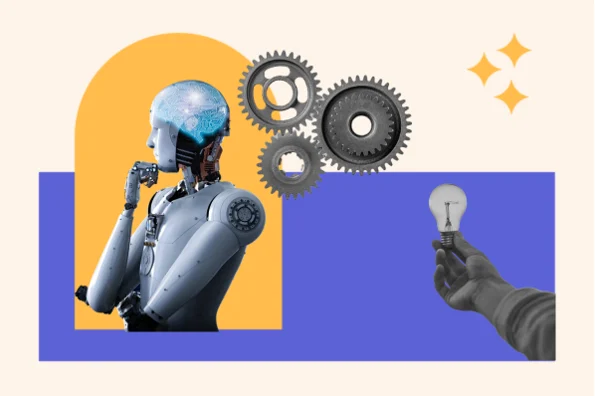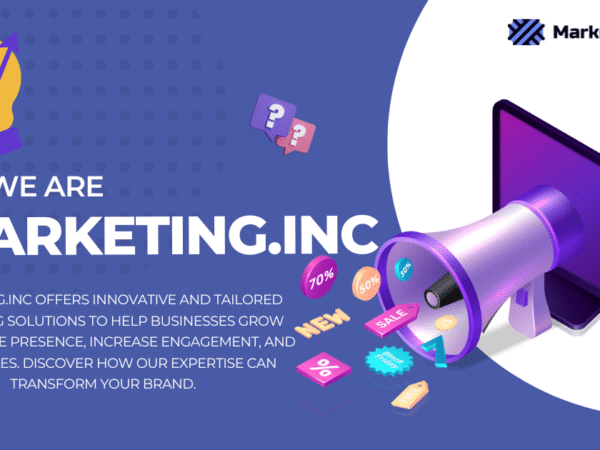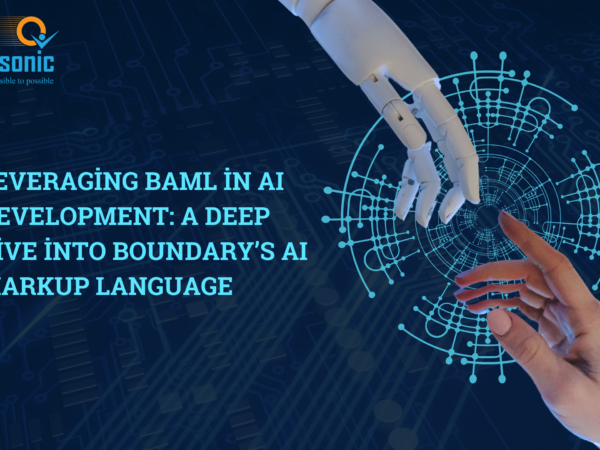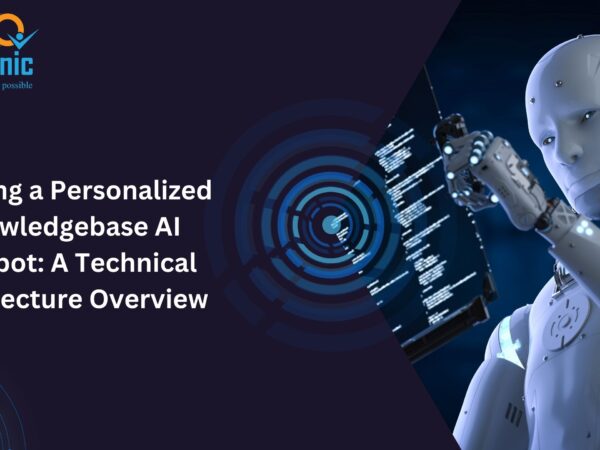Did you know that 94% of companies that have implemented AI in their product lifecycle automation report significant improvements in efficiency? This remarkable statistic showcases how artificial intelligence is revolutionizing the way we develop, test, and deploy products in the modern era.
We’ve seen firsthand how AI transforms every stage of product development, from initial requirements gathering to final deployment. Our teams now leverage intelligent systems that can generate code, validate designs, and perform comprehensive testing in a fraction of the time it once took, fundamentally changing how we approach product lifecycle management.
AI in Requirements Gathering and Planning
Modern product lifecycle automation has been transformed by AI’s capabilities in requirements gathering and planning phases. Advanced AI tools now streamline the documentation of stakeholder requirements, automatically capturing and organizing inputs from various project participants. These intelligent systems excel at analyzing stakeholder interests, preferences, and potential conflicts, providing teams with comprehensive insights for better decision-making.
AI-powered feasibility analysis has become instrumental in early project stages. By processing vast amounts of historical project data, market conditions, and resource constraints, AI systems can accurately predict project viability and highlight potential risks. This automated assessment helps teams optimize resource allocation and develop more realistic project timelines.
The integration of AI in requirements management also enhances traceability and validation. Smart algorithms continuously monitor requirement changes, dependencies, and impacts, ensuring all stakeholder needs remain aligned with project objectives throughout the development cycle. This systematic approach reduces errors and improves the overall quality of project planning and execution.
These advancements in AI-driven requirements gathering represent a significant leap forward in how organizations approach project planning and stakeholder management, making the entire process more efficient and reliable.
AI-Powered Code Generation
AI is revolutionizing product lifecycle automation through advanced code generation capabilities. Using sophisticated natural language processing techniques, modern AI tools can transform simple English descriptions into functional code snippets and generate boilerplate code within seconds. These AI-powered assistants excel at automating repetitive coding tasks, significantly enhancing developer productivity and allowing engineering teams to focus on complex problem-solving and innovation.
The integration of AI in development workflows has become increasingly sophisticated, offering features like context-aware code completion, intelligent refactoring suggestions, and automated test generation. This technological advancement is particularly valuable for teams working on large-scale software projects, where consistent code patterns and rapid prototyping are essential for maintaining development velocity.
By leveraging AI in the software development lifecycle, organizations can accelerate their time-to-market while maintaining high code quality standards. The technology not only reduces manual coding effort but also helps ensure consistency across codebases, making maintenance and updates more manageable in the long run.
Design Validation and Simulations
AI-powered product lifecycle automation is revolutionizing how we validate and test designs before production. Through sophisticated simulation tools, artificial intelligence analyzes complex design elements in real-time, meticulously checking for structural integrity issues and potential failure points. The system runs thousands of virtual tests simultaneously, validating that each design meets precise specifications and quality standards.
By leveraging AI in the validation process, teams can detect and address design flaws early in the development cycle, significantly reducing costly modifications later. These automated simulations assess everything from material stress points to manufacturing feasibility, providing comprehensive design verification within hours instead of weeks.
The integration of machine learning algorithms enables continuous improvement of the validation process. As more designs are analyzed, the AI system becomes increasingly accurate at predicting potential issues and suggesting optimizations. This proactive approach to design validation not only enhances product reliability but also streamlines the entire development workflow, delivering substantial time and cost savings while ensuring superior quality outcomes.
Modern AI validation tools can also simulate real-world conditions and usage scenarios, offering unprecedented insight into how products will perform in various environments. This comprehensive testing capability helps teams make data-driven decisions and refinements before committing to physical prototypes, accelerating the path from concept to market-ready product.
Automated Test Case Generation with AI
AI technology is revolutionizing the product lifecycle through intelligent test case generation. By analyzing application logic and user behavior patterns, AI systems automatically create comprehensive test scenarios that would traditionally require extensive manual effort. The AI examines typical user interactions and maps complex application logic flows to generate targeted test cases that maximize coverage.
This automated approach significantly reduces the manual testing workload while improving the overall quality of testing. Teams can now detect potential issues earlier in the development cycle through AI-powered test generation that identifies edge cases and common failure points. The result is more thorough testing coverage, faster development cycles, and higher quality software releases.
The AI testing systems continuously learn and adapt their test case generation based on new interaction patterns and emerging usage scenarios. This dynamic capability ensures testing stays relevant and comprehensive as applications evolve. For development teams, this means more efficient testing processes and the ability to maintain robust quality assurance even as software complexity increases.
AI-Driven Testing and Automation in Product Lifecycle
The integration of AI in product lifecycle automation is revolutionizing how we approach continuous testing and quality assurance. Modern development teams are harnessing AI-powered tools like ChatGPT to transform their testing processes, achieving unprecedented efficiency and coverage.
These intelligent systems analyze code patterns and user behaviors in real-time, automatically generating comprehensive test scenarios that would traditionally require significant manual effort. The AI algorithms identify potential edge cases and regression issues, ensuring robust testing coverage across the entire product lifecycle.
By implementing AI-driven testing automation, development teams can:
- Reduce test creation time by up to 80%
- Expand test coverage across multiple scenarios simultaneously
- Identify and address potential issues earlier in development
- Maintain consistent quality throughout the product lifecycle
The continuous evolution of AI testing capabilities means teams can now focus more on strategic development while automated systems handle routine testing tasks. This shift not only accelerates the development cycle but also ensures more reliable and thorough testing processes, ultimately leading to higher-quality product releases.
As AI technology continues to mature, we can expect even more sophisticated testing automation solutions that will further streamline the product development lifecycle and enhance overall software quality.
Visual Testing with Image Recognition
I’ve seen remarkable advances in UI testing through computer vision technology, which is transforming product lifecycle automation. Today’s AI-powered tools can analyze complex 3D renderings and interactive displays with unprecedented precision. The intelligent system detects subtle visual inconsistencies, validates dynamic elements, and ensures proper rendering across various devices and screen sizes. This automated visual testing approach delivers significantly higher reliability and efficiency compared to traditional manual methods.
Modern AI testing frameworks can perform comprehensive visual regression testing, identifying even microscopic differences in interface elements. The technology excels at validating complex UI components, from simple buttons to sophisticated 3D product visualizations. By incorporating machine learning algorithms, these testing solutions continue to improve their accuracy over time, reducing false positives and streamlining the quality assurance process.
The integration of computer vision in product testing workflows has revolutionized how development teams approach UI validation. This technological advancement not only accelerates the testing cycle but also ensures consistent user experiences across all platforms and devices.
Test Data Optimization with AI
AI-powered solutions are revolutionizing product lifecycle automation through intelligent test data generation. By leveraging machine learning algorithms, we create synthetic datasets that precisely mirror real-world usage patterns and behaviors. Our AI systems analyze actual user interactions and transaction flows to generate statistically accurate test data while maintaining strict privacy standards.
This advanced approach to test data optimization ensures higher reliability and more meaningful test results across the development lifecycle. The AI continuously adapts and learns from emerging patterns and edge cases, making the generated test data increasingly sophisticated and representative of real-world scenarios. This dynamic learning capability helps development teams validate product functionality against the most current user behavior patterns.
The synthetic data maintains perfect statistical distributions while completely anonymizing any sensitive information. Teams can confidently run comprehensive tests using data that reflects genuine user interactions without compromising privacy or compliance requirements. This makes AI-driven test data generation an essential component of modern product development and quality assurance workflows.
AI in Deployment and Release
AI is revolutionizing product lifecycle automation by transforming how we handle deployment processes. Modern AI-powered systems streamline the transition from development to production environments through intelligent automation. These advanced tools continuously monitor system health metrics, using predictive analytics to identify potential deployment issues before they impact users.
Smart deployment orchestration leverages machine learning algorithms to automatically optimize deployment parameters based on historical performance data and current system conditions. The AI-driven tools enhance release management by implementing intelligent rollback mechanisms that can detect and respond to anomalies in real-time.
What makes these systems particularly effective is their ability to learn from each deployment cycle, continuously improving their decision-making capabilities. By analyzing patterns across multiple releases, AI systems can recommend optimal deployment windows and configurations while automatically adjusting resource allocation to maintain peak performance during transitions.
The automated deployment pipeline also includes sophisticated monitoring capabilities that track key performance indicators throughout the release process. This proactive approach to deployment management significantly reduces downtime and minimizes potential disruptions to user experience, making the entire process more reliable and efficient.
With AI handling the complex coordination of deployment tasks, development teams can focus on innovation rather than managing routine release operations. This shift represents a significant advancement in how organizations approach their deployment strategies, leading to more consistent and successful releases.
Model Deployment and Integration
Successful AI in product lifecycle automation hinges on effective model deployment strategies. Organizations must adopt a systematic approach to integrating AI models within production environments. Containerization serves as a cornerstone technology, enabling teams to package models alongside their dependencies, which ensures consistent performance across diverse infrastructure setups.
Modern deployment pipelines leverage automated scaling solutions that dynamically adjust computational resources based on real-time demand. This elasticity optimizes resource utilization while maintaining responsive system performance. Infrastructure monitoring systems track critical metrics, including model health, prediction accuracy, and system latency, providing visibility into operational efficiency.
Key integration considerations include:
- Infrastructure compatibility assessment
- Resource allocation optimization
- Performance monitoring frameworks
- Automated failover mechanisms
- Version control and model tracking
By implementing robust CI/CD pipelines, teams can streamline the deployment process while maintaining high reliability standards. Regular health checks and automated rollback capabilities ensure system stability during updates or when performance anomalies are detected.
This comprehensive deployment strategy enables seamless integration with existing infrastructure components while supporting future scalability requirements. Organizations can maintain operational efficiency while accelerating their AI implementation timeline through systematic deployment practices.
Monitoring and Maintenance
AI-powered tools are revolutionizing system monitoring and maintenance in modern software development. Advanced predictive analytics enable real-time tracking of deployed model performance, continuously analyzing key metrics to proactively identify potential issues before they affect end users. The intelligent monitoring systems automatically detect anomalies, recommend optimal maintenance windows, and dynamically adjust monitoring thresholds based on historical performance patterns.
By implementing AI in product lifecycle automation for monitoring, organizations can achieve enhanced software reliability while significantly reducing both system downtime and ongoing maintenance costs. The self-learning capabilities of these systems ensure that monitoring evolves alongside the application, providing increasingly accurate predictions and maintenance recommendations over time.
This proactive approach to system health represents a major shift from traditional reactive maintenance models. Machine learning algorithms process vast amounts of performance data to establish baseline metrics and identify subtle deviations that might indicate emerging problems. This early warning system allows development teams to address potential issues during planned maintenance windows rather than responding to unexpected failures.
The integration of AI-driven monitoring and maintenance capabilities has become essential for organizations seeking to maintain high availability and optimal performance of their software systems while maximizing operational efficiency.
Future Implications of AI-Driven Product Lifecycle Management
AI automation is fundamentally reshaping product lifecycle management, ushering in a new era of intelligent manufacturing and development processes. As organizations embrace sophisticated predictive analytics and machine learning algorithms, the entire product lifecycle – from conception to retirement – is becoming increasingly data-driven and efficient.
Smart automation systems are revolutionizing workflow capabilities across industries, with AI-powered tools handling complex development tasks that once required extensive manual intervention. These advancements enable faster product iterations, improved quality control, and more accurate demand forecasting.
Key innovations in product lifecycle automation include:
- Predictive maintenance scheduling
- Real-time supply chain optimization
- Automated quality assurance protocols
- Dynamic inventory management
- Intelligent design validation systems
While these technological advances promise enhanced efficiency and productivity, they also raise important ethical considerations. Organizations must carefully balance automation capabilities with responsible AI practices, particularly regarding data privacy, algorithmic bias, and transparency in decision-making processes.
The future of AI-driven product lifecycle management will likely see even greater integration of autonomous systems, though human oversight remains crucial for strategic decisions and ethical governance. As these technologies mature, successful implementation will depend on striking the right balance between automated efficiency and human-centered design principles.
Looking ahead, organizations that effectively harness AI automation while maintaining strong ethical frameworks will be best positioned to deliver superior products and services in an increasingly competitive marketplace.
Embracing the AI Revolution in Product Development
As we’ve explored throughout this comprehensive guide, AI in product lifecycle automation is no longer just a technological trend – it’s becoming the backbone of modern product development. We’ve seen how these intelligent systems enhance everything from requirements gathering to deployment, making processes more efficient and reliable while reducing human error.
Looking ahead, we believe the continued evolution of AI technologies will further transform product lifecycle management. While challenges around ethical implementation and responsible AI practices remain important considerations, the benefits of integrating AI automation are undeniable. Organizations that embrace these advances while maintaining strong governance frameworks will be best positioned for success in this rapidly evolving landscape.








